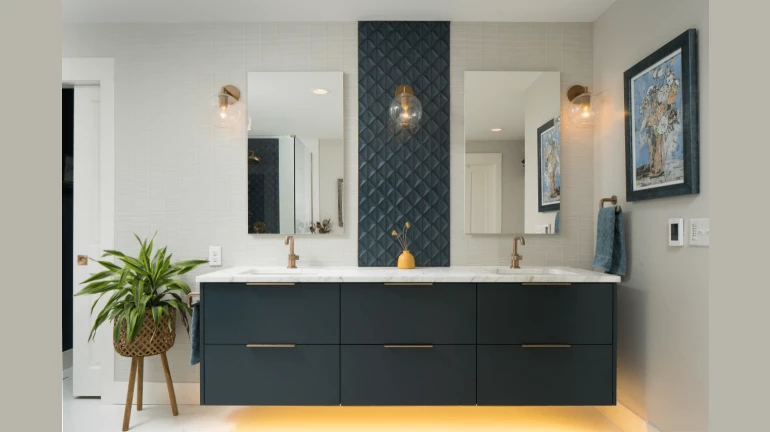
Imagine stepping into a home where every room flows seamlessly into the next—where textures, colours, and styles speak to each other, creating a story of cohesive design. Whether you're renovating your current home or designing a new one, finding the right balance between functionality and style is key. This especially holds true when you're choosing living room floor tiles and modern bathroom tiles—two areas that serve very different purposes but can visually complement each other when done right.
In this guide, we'll walk you through how to mix and match tiles across these spaces to create a home that feels unified, sophisticated, and unmistakably yours.
The living room and bathroom are two of the most frequented spaces in any home. While one serves as a central social hub, the other is your private oasis. Despite their different functions, connecting them through thoughtful tile design enhances the visual rhythm of your interiors. Blending living room floor tiles and modern bathroom tiles doesn’t mean making them identical—it’s about creating visual harmony through colour, texture, pattern, or tone.
The easiest way to tie rooms together is through colour. If your living room floor tiles are in earthy tones like beige, taupe, or grey, choose bathroom tiles in a similar palette. This creates a subtle continuity that makes your home feel more spacious and cohesive.
A unified colour scheme doesn’t mean the tiles need to have the same texture. In fact, mixing textures adds depth to your design.
Try mixing glossy wall tiles in the bathroom with matte floors, while keeping the colour tones aligned with your living room tiles. This can elevate both spaces without sacrificing safety or style.
Patterned tiles can be eye-catching, but when you're mixing and matching across rooms, it’s important to use them with purpose.
The trick is to make sure only one space dominates in terms of pattern while the other complements it.
Tile size can dramatically affect the visual weight of a space. Large-format living room floor tiles help open up the area and make it feel more expansive. Meanwhile, bathroom tiles—especially on walls—can be smaller for better detailing and flexibility around fittings.
If your bathroom and living room are adjacent, transitional tiles can help blend them beautifully. For instance, install a strip of mosaic tiles or a patterned border where the two spaces meet. This buffer tile acts like a bridge, easing the shift from one style to another.
Think of it as a subtle design element that ensures a cohesive and visually appealing transition between rooms.
Maybe your living room has a rustic charm with wood-look tiles, while you want your bathroom to have a more serene, spa-like vibe. That’s okay. You can still find common ground in the overall theme.
For example:
Focus on shared design elements like tone, texture, or layout. The goal isn’t to make them identical, but to ensure they complement each other and create a harmonious flow.
In both rooms, borders or accent tiles can be used to inject style without overwhelming the space.
This technique adds a playful element to your design, showing creativity while maintaining design unity.
With a thoughtful approach to mixing and matching living room floor tiles and modern bathroom tiles, you can create a design story that’s both stylish and personal. Remember, it’s about creating subtle echoes between spaces that enhance your home’s beauty, flow, and function.
With an extensive range of tiles that cater to every room’s purpose and personality, brands like Simpolo Tiles & Bathware offer options that make it effortless to mix and match your living room and bathroom spaces.
So go ahead—mix textures and coordinate tones, because when tiles are thoughtfully combined, your spaces reflect intention and style.





